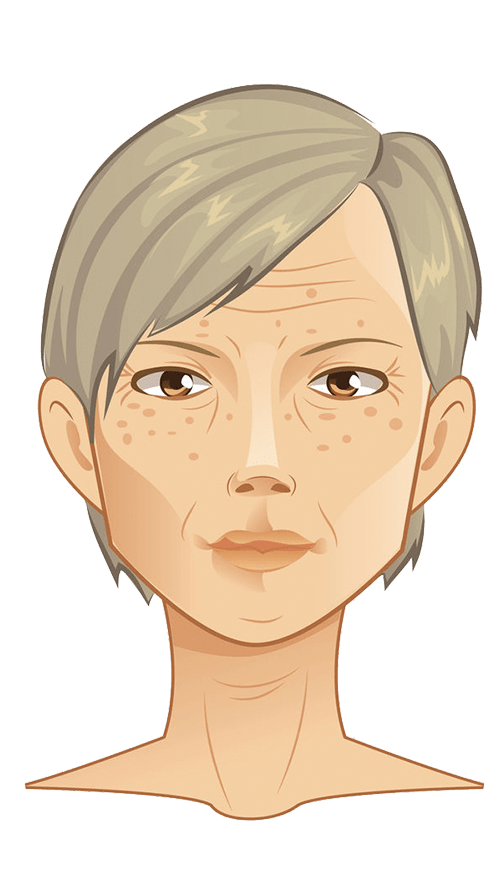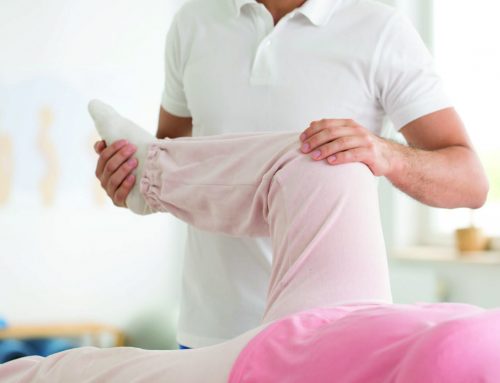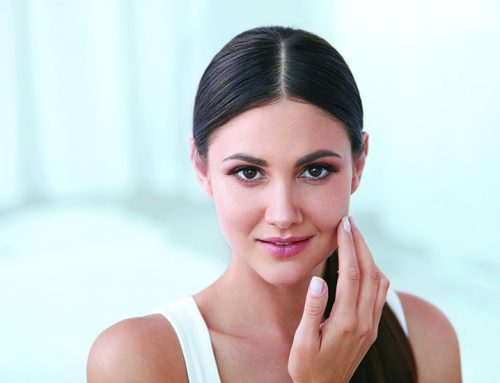Take a look through the changes on your face as you age.
The rate of new cells produced by the skin begins to slow down with increasing age. Collagen, and elastin production slows down, resulting in drier, duller skin, puffiness and some skin tone loss.
• Puffy eyes
• Increase in pore size
• First signs of broken veins show up as red dots
• Trace of frown lines in lower forehead between eyes
• Upper eyelids become hooded
• Pouching of eyelids become more prominent
• Fine wrinkling begins
Beauty advice
*Start using serums*
Get a serum which contains antioxidants such as vitamin C or E, resveratrol or green tea.
- Serums help to nourish and energise the skin with vitamins, antioxidants and peptides contained in tiny molecules to infiltrate the dermal layers quickly.
- Can be worn under any moisturizer.
Use a mild chemical exfoliator to get rid of dead skin cells, which clog your pores and cause the skin to look dull and feel dry
- Normalises the skin’s moisture barrier to hold in more moisture
- Twice weekly to keep skin fresh and bright
- Massage your cleanser deep into the skin with warm water Choose masks with added boosters such as lactic or glycolic acid for some serious skin brightening
 40s
40s
In your pre-menopausal years, oestrogen levels start to decline and make your skin less bouncy, and you may find your neck and chest areas sagging and wrinkling. Lymphatic system starts to slow down and elastin fibres start to break down, resulting in puffy cheeks.
• Upper and lower eyelids begin to sag, creating deep-set look
• Circles under eyes may start to look like bags
• Crow’s feet develop Vertical lines begin to deepen around lips
• Frown lines deepen, horizontal wrinkles develop
• Increased dryness and sensitivities
• Fluid accumulation in upper cheek area, causing pouches to form and sagging of cheek
Beauty advice
*Tend to your eyes*
Invest in a lifting and contouring eye cream with peptides and plant oils to nourish and strengthen the skin.
Rich and hydrating moisturiser to reduce the signs of ageing. Choose a product with hyaluronic acid, redness-reducing niacinamide, and skin barrier-supporting ceramides
- Apply it all in dots over the orbital bone
- Use gentle pressure to massage the eye cream with your fingertips
- Choose eye creams with niacinamide to calm redness, caffeine to fight inflammation, or retinol to boost collagen production
- Skin brighteners to instantly brighten a tired-looking face
 50s
50s
Skin tone becomes more uneven, with increasing number of sun spots and pigmentation.
Menopause kicks in and reduces sebum production, which leads to dehydrated skin (Read on how you can choose the right facial moisturiser) and larger pores. Lines and wrinkles start to deepen into folds.
• Face loses elasticity, skin sags
• Horizontal line established, forehead sags
• Eyebrows sag, causing eyelids to appear hooded and heavy
• Jawline sags, creating impressions of jowls
• Neck skin droops in fold, cords develop, creating a turkey-gobbler look
• Hollow temples
Beauty advice
*Plump it up*
Try a vitamin A retinol-based product (a rich night cream with peptides, a hydrating prescription retinoid, or retinol cream or lotion).
- Tones and firms the skin
- Speeds up the production of new skin cells and collagen production
- If the retinoid causes dryness, mix it with a moisturiser or a night cream, or use it only three times a week
Add in facial oil (only pure plant oils) to your routine – the high lipid content will compensate for diminished sebum production, calm inflammation and help seal in moisture to keep your skin supple.
Reduce hyperpigmentation with creams containing 2 percent hydroquinone, phytophenol, or kojic acid
When it comes to ageing, there is no cheating
When it comes to ageing, it’s not only just genetics that come into play. Intrinsic ageing factors – where genetics is part of the equation – determines how our skin naturally changes throughout the years, and may influence things such as the colour of our skin, our skin types, as well as our pore sizes.
The bad news is, there is no way to change these, as it is all in our genes.
The good news?
It contributes to only 10-15% the ageing process. If you are lucky, the changes probably wouldn’t be noticeable until you reach your 40s or even your 60s!
So what constitutes the remaining 85-90%?
The answer is – extrinsic ageing factors, which refers to environment and lifestyle factors, including UV exposure. The effects of smoking, alcohol, poor nutrition intake, sleep deprivation, exposure to air conditioning, central heating and pollution, as well as poor protection from damaging UV rays will start to show up in your face. All these are accumulative – even the tans and sunburns you had when you were still a child will affect your skin. To put it simple – it’s payback time. These changes tend to appear much earlier in life, as early as your 20s or 30s. The good news is – all these are within our control.
Without a healthy lifestyle and commitment to care for your skin, it would not make much difference even if you were blessed with good skin from birth.
7 must-know beauty tips!
- The correct order of skin care routine
Day: Cleanser-toner-day cream-moisturiser-sunscreenNight: Cleanser-toner-spot treatment-serum-eye cream-moisturiser-night cream-face oil - Avoid repetitive facial expressions
When you make a facial expression, you contract the underlying muscles. If you repeatedly contract the same muscles for many years, these lines become permanent. - Eat a healthy, well-balanced dietEating plenty of fresh fruits and vegetables may help prevent damage that leads to premature skin ageing. Avoid refined carbohydrates as it can accelerate ageing.Before you start exercising, learn how and what to eat before a start of your exercise regime! Remember a healthy lifestyle, comprises not just adequate amounts of exercise but also complemented with nutritious and healthy diet. This is especially important for those who wish to loose weight or are watching their diet!
- Exercise most days of the weekExercising can improve circulation and boost the immune system, which gives the skin a more youthful appearance. Read on the difference between Anaerobic and Aerobic exercise and how you can make Martial Arts a part of your fitness regime.If you have not been exercising for a while, fear not, you can start small by trying out these 4 low impact exercises that are good for people with knees and joint problem.
- Stop using skin care products that sting or burnWhen your skin burns or stings, it means your skin is irritated. Irritating your skin can make it look older.
-
Sunscreen, sunscreen and sunscreen!
To avoid the negative effects of sun exposure, it is critical to use broad-spectrum sun protection products on a daily basis, even if you are indoors.
Read the importance of sunscreen and understand what does “PA” and “SPF” ( Sun Protection Factor ) means on a sunscreen! Regular application of sunscreen helps prevent ageing. Slather on a generous amounts of sunscreen before you head out to exercise!
- Apply all skin products in an upward motion
Get a copy or subscribe today!This article is featured in APR – MAY Issue of PRIME Magazine’s SPECIAL FEATURE. Other Special features found in the issue, are:
Skin Foods: Beauty Treats for Your Skin > PP 30
The Four Faces of Hyperpigmentation > PP 32
Fight the Lines: Anti-ageing Facial Exercise > PP 36
Know your Scars > PP 38
Skincare for Men > PP 40









